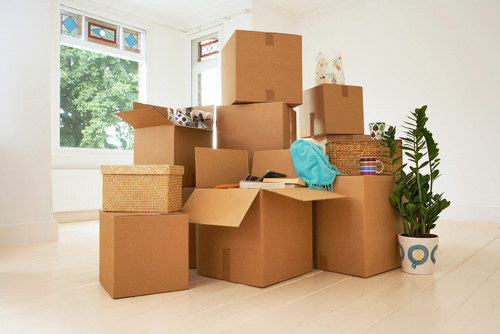Do you have a strategy for how you are going to pack your moving boxes for your upcoming move? For some, it’s a matter of throwing things haphazardly in bubble wrap before taping it up. What happens when you arrive at your new home and find things broken, missing, and realizing you spent a small fortune on packing supplies?
This is not a scenario that anyone would want to deal with during this exciting new chapter moving to a new home. Not only is it important to properly pack your boxes, but there should be a strategy in place when it comes to how things are wrapped, labelled, and how you will get your items safely to your new place and easy to locate when you arrive.
It may sound simple, but it’s easier than you may think to forget how things were packed to begin with. Rather than hoping for the best on moving day, why not learn the proper way to pack your moving boxes? In just a few minutes, this guide will show you how to do this properly so that your moving day can feel calm and organized.
Where to begin
Start by categorizing your belongings by room. It’s easier to unpack when all of your kitchen items are together, your bedrooms are together, and your bathroom items are together, rather than mixed up to save space. You’ll find unpacking easier when you can identify which box belongs with which room.
Then, organize your belongings by size and weight so that you can pack similar sizes and weights together. You’ll want to wrap your heaviest items first with packing paper or bubble wrap to be placed at the bottom of the box before placing your wrapped lighter items on top of them.
Be sure to separate those bottom box pieces from the top of the box pieces with cushion foam. You’d also be wise to place packing peanuts at the bottom of the box before putting any items inside, in order to ensure your bottom pieces have plenty of protection.
Once you’ve filled a box, you’ll want to make sure the whole thing is cushioned by adding packing peanuts in any open spaces in case of shifting in transport. You can then close the lid as long as you didn’t overstuff the box, making sure that you stay 30lbs and under on the final weight.
You may struggle lifting boxes that are too heavy and they could end up breaking the box from the weight. If you feel you’ve properly packed your box, seal it with packing tape and label not only the room it’s meant for, but also the items inside. When it’s time to look for your favorite cookware, you’ll be able to read each box to see which one contains an item.
Preparing for the movers
Unless you’ve hired a company that packs for you, you’ll need to have all of the packing completed yourself before the movers arrive. When the van arrives, the professional movers will begin moving your items for you and it’s possible that items could get damaged if you’ve packed improperly.
Make sure you’ve repacked anything questionable like soiled or ripped cartons full of old holidays supplies and utilize fresh boxes. Make sure you add packing peanuts for items that rattle when shaken.
Make sure you go into the day with a packing supply list. It will be easier to ensure you’ve covered your bases if you have everything you need to handle the job.
Start with your moving boxes in a variety of sizes and shapes to fit your belongings. Many are making the switch to green boxes rather than the standard cardboard boxes. If you choose cardboard, you’ll also need packing tape to assemble the boxes.
Otherwise, make sure you have a marker and labels or stickers to identify your boxes, bubble wrap, tissue paper, and packing paper to stuff boxes. Be sure to wrap glass, jars, odd-shaped items, and other fragile items with a few sheets of packing paper before stuffing into boxes. You’d also be wise to include your name on the labels, along with “Fragile” on delicate items or “this end up” when needed.
Lastly, pack similar items together to avoid damage, wrap them individually with clean paper rather than newspaper which could have ink rub-off onto your items, and keep pairs of things together so that you aren’t spending weeks trying to find the other part of a set.
Be wise in the way you pack your home so that you don’t arrive at a new home with missing items, broken china, or damage from those old, torn boxes. The smartest decision may be to switch to green moving boxes this year knowing that they are more durable for moving your precious belongings.

